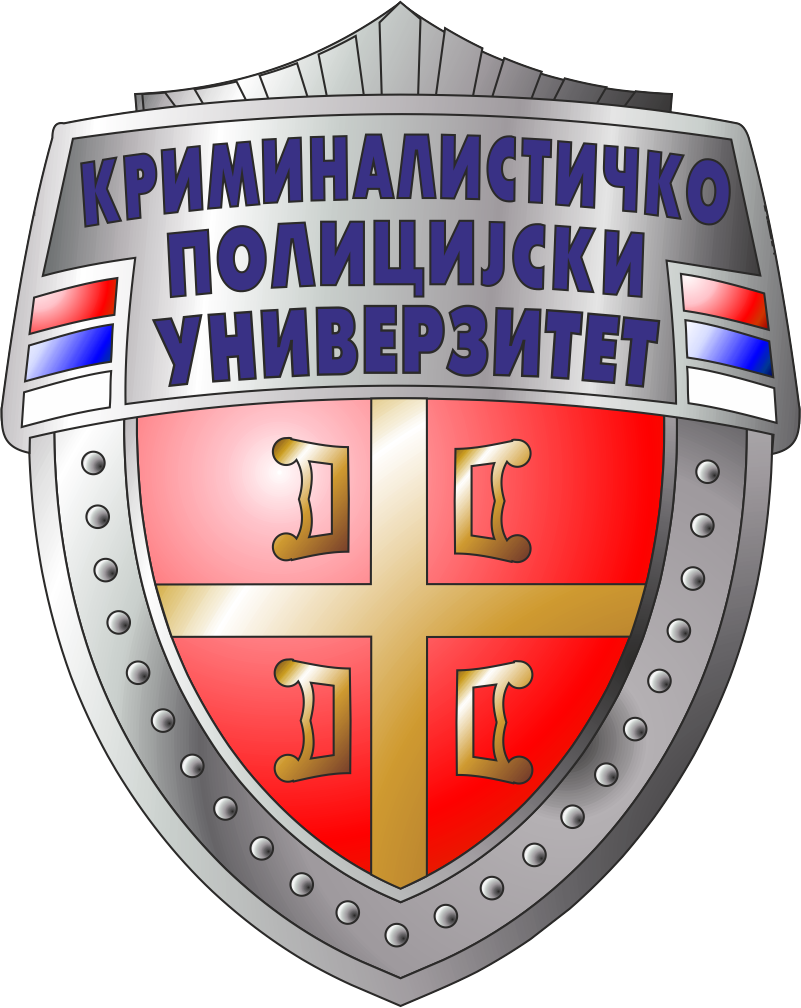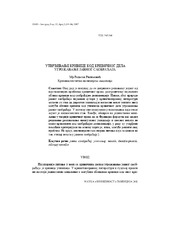Приказ основних података о документу
Establishing guilt in criminal offence of endangering road traffic
Utvrđivanje krivice kod krivičnog dela ugrožavanje javnog saobraćaja
| dc.creator | Risimović, Radosav | |
| dc.date.accessioned | 2019-03-21T15:54:07Z | |
| dc.date.available | 2019-03-21T15:54:07Z | |
| dc.date.issued | 2007 | |
| dc.identifier.issn | 0354-8872 | |
| dc.identifier.uri | http://jakov.kpu.edu.rs/handle/123456789/168 | |
| dc.description.abstract | Because of the nature of public traffic, which is generally a dangerous activity, some theoreticians have, at first sight, logical opinion that direct intention is not possible as a degree of guilt in criminal offence of endangering public traffic. However, it is our opinion that participants in traffic, as a rule, desire not to injure a person’s body or cause damage to property, but desire concrete danger as a consequence of this criminal act. Otherwise, criminal offence of the Article 289 of the Criminal Code of the Republic of Serbia won’t be committed, but some other criminal offence against life and body (for example, manslaughter). Since the intellectual element of guilt, in the cases of eventual premeditation and conscious negligence, is the same, and since the Frank’s formula could not be used for establishing the consent to consequence of traffic offence, the question remains how to distinguish premeditation from negligence. We believe that solving of this issue doesn’t require creating a special form of guilt as recommend certain authors, but that it can be done by using the existing provisions of the Criminal Code (Articles 25 and 26 of the Criminal Code) i.e. using auxiliary criteria for distinguishing eventual premeditation from conscience negligence. At the end of the paper, we have pointed out that in the case where several people were included in traffic accident, the guilt of one doesn’t exclude the guilt of the others, which means that the form of guilt has to be established for each of them separately. Exclusion from the rule is the traffic situation in which the perpetrator, by violating the traffic regulations, contributes to concrete danger, but his action is not the direct cause of the traffic accident. | en |
| dc.description.abstract | Ovaj rad je pokušaj da se doprinese rešavanju jednog od najsloženijih problema krivičnog prava, razgraničenju pojedinih oblika krivice kod saobraćajne delikvencije. Naime, zbog prirode javnog saobraćaja pojedini autori u krivično-pravnoj literaturi zauzeli su stav da direktan umišljaj i nesvesni nehat uopšte nisu mogući oblici krivice kod učinioca krivičnog dela ugrožavanje javnog saobraćaja. U pogledu ove nedoumice u izlaganjima koja slede zauzet je nedvosmislen stav. Takođe, obzirom na jedinstveno mišljenje u teoriji krivičnog prava da se Frankova formula kao model rešavanja razlikovanja eventualnog umišljaja i svesnog nehata ne može primeniti kod saobraćajne delikvencije, u radu su utvrđeni pomoćni kriterijumi na osnovu kojih je, ipak, moguće rešiti ovaj problem. Na kraju, analizirali smo sporna pitanja koja se odnose na tzv. sticaj nehata u javnom saobraćaju). | sr |
| dc.publisher | Kriminalističko- policijska akademija, Beograd | |
| dc.rights | openAccess | |
| dc.source | Nauka, bezbednost, policija | |
| dc.subject | javni saobraćaj | sr |
| dc.subject | umišljaj | sr |
| dc.subject | nehat | sr |
| dc.subject | bezobzirnost | sr |
| dc.subject | sticaj nehata | sr |
| dc.title | Establishing guilt in criminal offence of endangering road traffic | en |
| dc.title | Utvrđivanje krivice kod krivičnog dela ugrožavanje javnog saobraćaja | sr |
| dc.type | article | |
| dc.rights.license | ARR | |
| dcterms.abstract | Рисимовић, Радосав; Утврђивање кривице код кривичног дела угрожавање јавног саобраћаја; Утврђивање кривице код кривичног дела угрожавање јавног саобраћаја; | |
| dc.citation.volume | 12 | |
| dc.citation.issue | 2 | |
| dc.citation.spage | 83 | |
| dc.citation.epage | 96 | |
| dc.citation.other | 12(2): 83-96 | |
| dc.citation.rank | M51 | |
| dc.identifier.rcub | https://hdl.handle.net/21.15107/rcub_jakov_168 | |
| dc.identifier.fulltext | http://jakov.kpu.edu.rs/bitstream/id/2334/166.pdf | |
| dc.type.version | publishedVersion |


